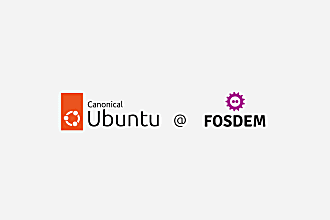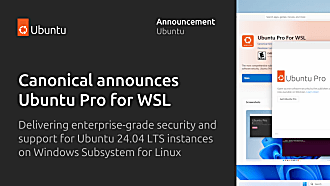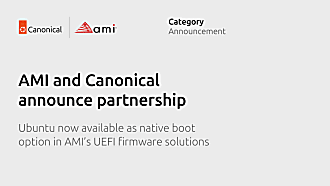Canonical
on 28 June 2010
Issue 134 (August, 2010) of Linux Format magazine contains an interview by Jono Bacon in which I discuss Unity and other related topics. Below are the questions Jono asked me and my responses.
How did you get started in Open Source?
I had to build a UNIX shell and UNIX-like kernel for a university course on operating system design. After running into incompatibilities between system calls on Mac OS X and the Linux-powered lab computers, I installed Ubuntu on my Mac to align my development environment with that of the lab computers. At the end of the project, I remember thinking “this Ubuntu thing has everything I need, maybe I should stick with it.”
The following summer I worked at Google with Sean Egan, who was the maintainer of Pidgin at the time. Sean described what it was like to run an open source project, and I thought the responsibilities involved sounded really exciting.
The one application that was preventing me from making the switch from Mac OS X to Ubuntu was Quicksilver, a keyboard launcher application by Nicholas Jitkoff. For my senior thesis in Computer Science, I decided to form an open source software project to explore desktop search with the goal of ultimately producing an equivalent application for Linux, and the result was GNOME Do.
How did you join Canonical?
I met Mark Shuttleworth in Boston at GNOME Summit 2008, where I spoke with him about my ideas about user experience and free software. He suggested that I stop by Canonical’s London office for an interview and to see if I’d be interested in moving to London to join Canonical’s nascent design team, and by coincidence I had plans to visit London the very next week, so that’s what I did. I decided not to join Canonical initially, but eight months later Mark asked me to attend a design sprint in Capetown and I was too excited to say no!
Where do you fit into the design team and design vision of Ubuntu?
My role on the design team is “Desktop Interaction Architect.” I write narratives and create wireframes to describe wonderful experiences for people using Ubuntu. Other members of the design team turn these descriptions into interactive prototypes and visual renderings that can be tested with users and eventually implemented.
When I’m not “architecting desktop interaction,” I’m trying to engender interest in user experience throughout the free software community. To this end, I’ve led the One Hundred Paper Cuts project and the recently announced UX Advocate project while at Canonical.
I’m not sure how I fit into the “design vision” of Ubuntu, but I’ll answer this question by saying that I try to encourage technical stakeholders in Ubuntu to see software not only as an opportunity to write beautiful source code, but also as an opportunity to create beautiful experiences for people.
What is Unity?
Unity is a lightweight interface for your Ubuntu netbook. Considered more generally, it’s a shell tailored for devices with small screens.
Unity comprises: a launcher that makes opening and switching between applications delightful; a panel where indicators behave uniformly; a view of your installed applications, with Ubuntu Software Center integration; a view of your files, with quick access to favorite folders, recent files, downloads, and simple browsing; and a search interface, enabling pervasive use of find-as-you-type search so you can find applications, files, and settings with a few keystrokes.
What is the vision for Unity? What do you seek to achieve with it?
Canonical recently announced Ubuntu Light, a version of Ubuntu whose interface was honed to create a fast, simple, and secure web experience. Mark Shuttleworth describes Ubuntu Light adeptly in an announcement on his blog,
…Ubuntu Netbook Light, or Ubuntu Desktop Light, will give OEM’s the ability to differentiate themselves with fast-booting Linux offerings that are familiar to Ubuntu users and easy to use for new users, safe for web browsing in unprotected environments like airports and hotels, focused on doing that job very well, but upgradeable with a huge list of applications, on demand. The Light versions will also benefit from the huge amount of work done on every Ubuntu release to keep it maintained – instant-on environments need just as much protection as everyday desktops, and Ubuntu has a deep commitment to getting that right.
The Ubuntu Light range is available to OEM’s today. Each image will be hand-crafted to boot fastest on that specific hardware, the application load reduced to the minimum, and it comes with tools for Windows which assist in the management of the dual-boot experience. Initially, the focus is on the Netbook Light version based on Unity, but in future we expect to do a Light version of the desktop, too.
There’s a lot of overlap between Ubuntu Light and Ubuntu Netbook Edition, mostly because they’re both optimized for small screens and web browsing. Unity serves as the foundation of both products so that they can share common elements like indicators and the Launcher. My short term goal for Unity is to build a fantastic experience for Ubuntu Netbook Edition 10.10 by extending Ubuntu Light to support basic application and file management use cases that are appropriate for general purpose devices like netbooks.
I’d also like to explore search further, and begin to incorporate touch. I’m very interested in using search to tame complex user journeys (but I don’t treat search as a panacea), and everyone is interested in touch devices these days.
When will Unity hit the netbook edition?
Hopefully Unity will be released in Ubuntu Netbook Edition 10.10! We have a lot of work to do before October, but with Neil Patel as the Unity engineering lead, I am at ease.
Can people participate in Unity, and if so, how?
Unity is available immediately from a PPA:
ppa:canonical-dx-team/une
After adding this PPA to your Ubuntu system (you need to be running Lucid for now), install the “unity” package, then change your session from GNOME to Unity at the login screen.
Once you have Unity installed, please play with it and report bugs. You can find me in the IRC channel #ayatana on irc.freenode.net, where my nickname is “djsiegel.” Please come talk to me about Unity–I am eager to hear your feedback and suggestions!
How do you feel Unity improves on the current crop of netbook interfaces?
I’ve already described Unity’s Launcher as “delightful,” and I really meant it. The first version of the Launcher simply scrolled off screen when full. The second version of the Launcher, due to land in time for Ubuntu 10.10, behaves completely differently. Words cannot describe it–it’s breathtaking. If someone sees you using Unity, they will ask, “hey, what is that?”. It’s not only an improvement over the current crop of netbook interfaces, it’s an improvement over personal computer interfaces in general.
The Applications Place–Unity’s view of your installed applications–is unprecedented. It lets you browse your installed applications in a gorgeous manner, and provides find-as-you-type search of both your installed applications and applications available in the Ubuntu Software Center. It’s slick.
The Files Place–Unity’s view of the files on your netbook–eschews traditional, hierarchical filesystem navigation and instead promotes search and time-based browsing. This will make Ubuntu Netbook Edition the first netbook interface with a file browsing experience powered by Zeitgeist. There is still much to be designed, but it’s already a bold and exciting experiment that challenges many longstanding assumptions about how people think about their files.
How is this going to affect GNOME Shell?
Mark Shuttleworth already addressed this question during his keynote at Ubuntu Developer Summit, so I defer to him.
Some people have accused Ubuntu of mimicking Mac OS X, what is your take?
I don’t take a position on every silly little thing that people say, but if forced to take a position on the matter, I would say “haters gonna hate.”
What do you see as the ultimate goal and opportunity for Ubuntu on the desktop?
The ultimate opportunity for Ubuntu is to make people happy, and its goal is to do so ethically by not treating its users as means to an end; Ubuntu users will be made happy by great user experience, and they will be treated as ends in themselves by not requiring them to sacrifice freedom in order to use software.



